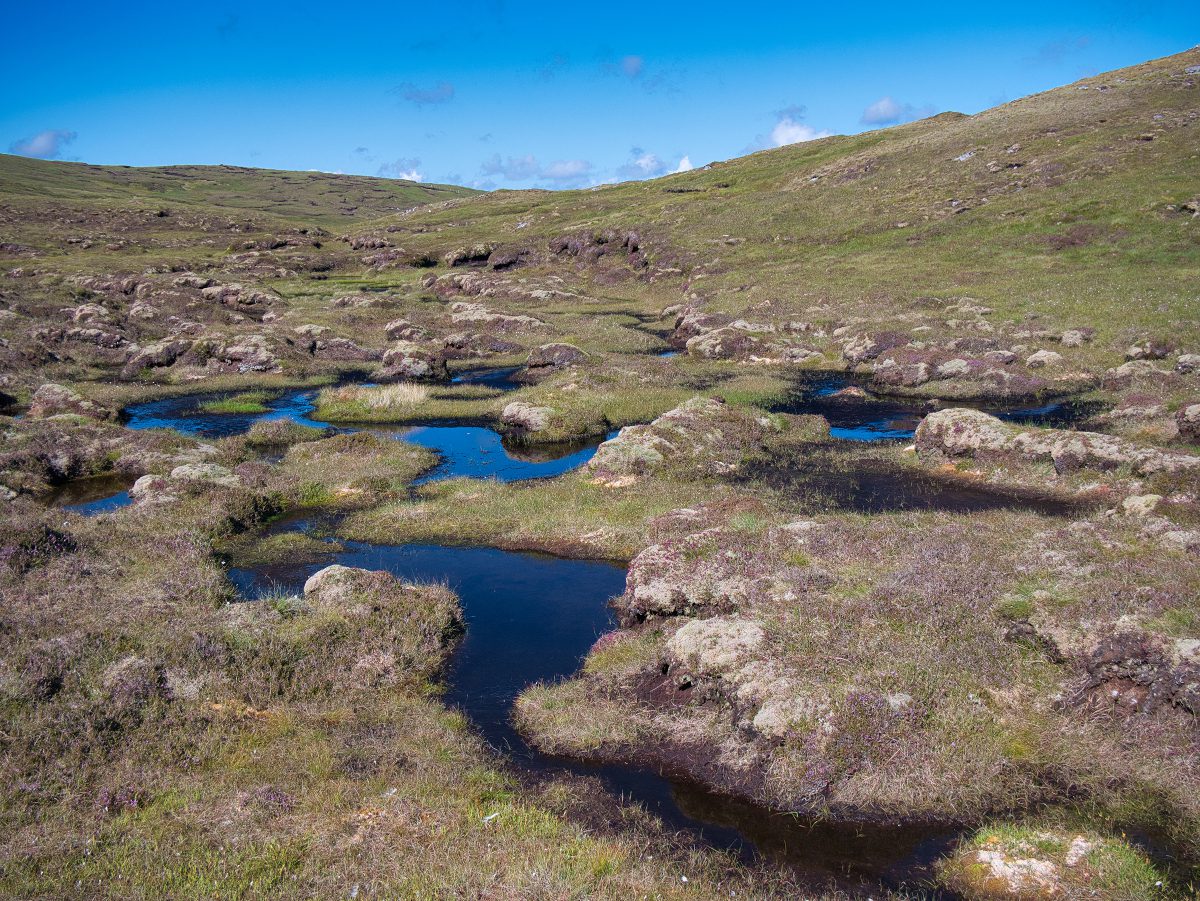
A new exhibition opening at the University of St Andrews’ Wardlaw Museum explores the importance of peatlands in Scotland and across the world.
While peat may conjure up images of whisky and wasteland, For Peatlands’ Sake aims to show how vital the resource is to our planet and to communities around the globe.
As a major carbon store, the protection of peatlands is vital in the fight against the climate emergency and their destruction could lead to carbon dioxide being released into the atmosphere in catastrophic quantities. Not only that, but communities around the world live on and by peatlands and rely on the natural resources that are intertwined with these ecosystems for their way of life.
The new exhibition, which opens this weekend (Sunday 29 January), explores peatlands and the communities that live near them and will include a new acquisition from renowned Scottish photographer Sophie Gerrard. Through a stunning series of images entitled The Flows, this new work presents the peatlands of the Flow Country in Caithness and Sutherland, as well as the people who live and work there.
Sophie said: “I’m delighted that The Flows – a body of work I began making in 2019 – is now one of the most recent acquisitions to the University of St Andrews’ photographic collections and that it is being exhibited at the Wardlaw Museum.
“The landscape of the peatlands is important for mitigating climate change and Scotland is home to the largest blanket peat bog in Europe: it is vital it’s protected. I’ve worked with the University of St Andrews closely since 2015 and I’m honoured that my work is held in such an extensive, impressive and important collection of photography in Scotland.”
From further afield, the Wardlaw Museum will also be showing the very different peatlands of Peru, which lie beneath thick tropical jungle and are important to the Urarina community.
The exhibition has been developed with Dr Katy Roucoux from the University’s School of Geography and Sustainable Development and makes use of years of research in both Peru and Scotland.
Dr Roucoux said: “This exhibition is a great opportunity for us to share the work carried out by the St Andrews Peatlands research group with a wider audience. Our research aims to answer questions about why and where peatlands exist, how they function as ecosystems, their role in climate change mitigation, and their contribution to the livelihoods and wellbeing of local people.
“From using satellite data to map the distribution of peatlands to understanding the cultural importance of peat bog spirits, the exhibition reflects the broad scope of our research and the wide range of features that make peatlands so important.”
As well as showcasing peatlands and their importance, the exhibition seeks to encourage visitors to make lifestyle decisions that help protect this vital resource.
The Wardlaw Museum’s Eilidh Lawrence, who has been central to the exhibition’s development, said: “Peatlands hold the same amount of carbon as the planet’s plants and vegetation, including our rainforests, and yet they cover a lot less of the Earth’s surface. It’s really important they are protected.
“We hope visitors to the exhibition will see that small actions can make a difference in our fight against climate change and have a positive impact on communities around the world. That could be anything from buying peat-free compost or asking your garden centre to stock it, to avoiding palm oil, which is often grown on degraded peatlands, and supporting conservation efforts taking place on our own doorstep.”
The exhibition is accompanied by a series of events, including a guided tour of one of Fife’s few remaining peatbogs, whisky tastings, and a family fun day exploring Peruvian culture with an opportunity to pat an alpaca. Full details of the programme are available on the Museums website.
For Peatlands Sake opens at the Wardlaw Museum in St Andrews on Sunday 29 January and runs until Monday 8 May 2023.






